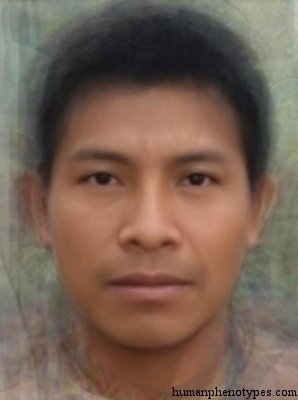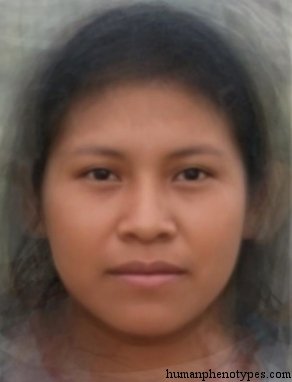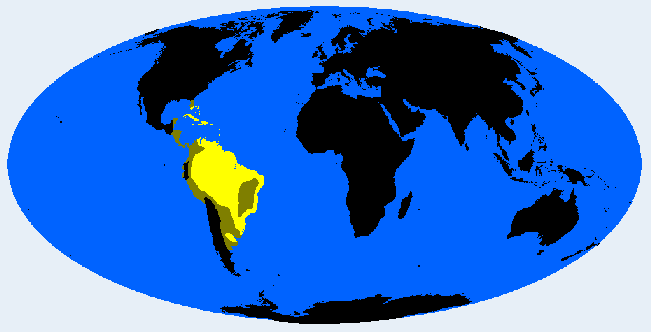Description:
Native American type of the tropical lowland forests of South America. Developed in Guyanan savannahs from a Proto Mongoloid stock that had migrated South coming from the Bering Strait. Later expanded all over Amazonia, modern Brazil, and the Caribbean, where it was the dominant type during pre-Colombian periods. Populations collapsed after contact with Europeans, but several Amazonian tribes remain until today. Body often short and mildly thick-set, in females strong lumbar lordosis, but small buttocks. Skull often medium-long, steep, broad forehead, soft facial features, weak cheekbones, narrow lid fissure, relatively high nose, weak chin, light to medium yellowish or reddish-brown skin, straight to wavy hair. The North Amazonid is often regarded as the typical variety. The slightly fairer and taller South Amazonids result from relatively late migrations to the South. The darker, more robust West Amazonids assimilated older elements.Names:
Brasilid (Eickstedt, 1937. 1952; Canals-Frau, 1950; Vogel, 1974; Knussmann, 1996), Amazonian (Debets, 1974; Alexeev, 1979), Sud-Atlantique (Vallois, 1968), Amazonid (Imbelloni, 1958; Lundman, 1967; Biasutti, 1967), Brasiliner (Lundman, 1943).






